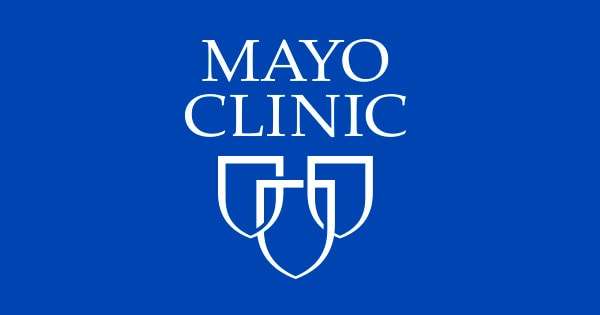Drug Effects and Side Effects
Medical research has uncovered many drugs useful in the treatment of mental disorders. Scientists strive to increase the effectiveness of these drugs while eliminating the side effects. Ideally, they wish to create a perfect pill for each disorder. But what causes side effects in the first place?
Think about the brain like a computer. The brain is a network of nerves that pass signals throughout the entire person just as wires pass electrical information throughout the computer. These signals are called neurotransmitters, and they are like the message carriers of the brain. If there are not enough signals, the messages will not be received. When signals are not received properly in the brain, you can blame a neurotransmitter. There are dozens of types of neurotransmitters that all carry out multiple functions in the brain and interact to affect each other as well.
Psychoactive drugs used in drug therapy are believed to work on the neurotransmitters of the brain. While a computer is a complex machine, the human brain is far more complex. Since it controls the entire body, a small imbalance in one area of the brain can create symptoms in other parts of the brain or the body. For doctors and scientists, messing with the chemical balance of the brain is like trying to rearrange a spider web. When they pull one strand, all the connected strands move and shift with it. Scientists adjust a brain chemical one way, and three other brain chemicals move out of place. The web of chemical impulses that make up the body are all intertwined and stuck to each other.
All drugs have side effects. If you read the back of the box or bottle of any over-the-counter medication, you are bound to see lists of warnings for drug interactions, allergies and side effects. So far it has been impossible for scientists to create a perfect drug free from side effects. It becomes even more difficult when working with the chemistry of the master computer that is the brain.
Side effects of drug therapy can include mental or physical symptoms. Some of the more common side effects across all types of drug therapy are digestive problems, shakiness, dry mouth, weight changes, headaches, or dizziness. Some can even create anxiety or depression. All of these effects can vary in how bad the symptoms are and how long they last based on dose, age, weight and other factors.
Regardless of the difficulty, great strides have been made in the past 50 years to create some effective drug therapy treatments for most mental disorders. Scientists are constantly trying to find different natural and created chemical compounds for use in drug therapy. Some states have made the use of medical marijuana legal to treat depression when prescribed by a doctor. However, the vast majority of prescription drugs used to treat mental disorder are synthetic and created in a laboratory.
Most psychoactive drugs fit into one or more of five categories grouped by their effects.
Stimulants
Although we may not think of it as a psychoactive drug, the caffeine in coffee is the most common and widely used stimulant in the world. Stimulants increase action in the central nervous system, providing energy and alertness. The most widely known prescription stimulant is Ritalin. Ritalin is used to treat attention disorders in both children and adults.
Antidepressants
As the name implies, antidepressants were created to treat depression. Unlike stimulants, antidepressant medication does not energize the person taking it. Antidepressants treat the depression and the depressive symptoms so the person can be normally active again.
Entire books have been written about Prozac, the most widely known antidepressant. Prozac belongs to a group of antidepressants known as SSRIs. SSRI stands for selective serotonin reuptake inhibitor, which simply means that it keeps the neurotransmitter serotonin available in the brain. Serotonin is a neurotransmitter in the brain whose job is to create feelings of comfort. Other drugs in the SSRI group are Zoloft and Paxil.
These antidepressants have also recently been found to be helpful in treating eating disorders, chronic pain and sometimes anxiety disorders such as phobias and obsessive-compulsive disorder.
Antianxiety Drugs
Antianxiety drugs, also known as depressants, work the opposite of stimulants by decreasing stimulation of the central nervous system. This creates a feeling of calm, reduces anxiety and can cause fatigue. The most common depressant drug is alcohol. We’ve all heard people say they are going to go home from work and crack open a beer to relax. Alcohol is not a drug that doctors prescribe for anxiety, but many people use and abuse it for that reason. Depressants are easy to get addicted to and can be very difficult to stop using.
Brand-name, prescription antianxiety medications include Valium, Xanax and Klonopin. These depressants all create a calming effect by working on the neurotransmitter GABA. Antianxiety drugs can be used to treat anxiety disorders such as panic disorder, generalized anxiety disorder, and phobias.
Mood Stabilizers
Mood stabilizers are used to treat mood disorders such as bipolar disorder and mania. Most of these drugs were originally used to treat seizure disorders, but luckily scientists found that one of the side effects was a stabilized mood. Lithium is the most commonly used mood stabilizer and can be very effective for people who can live with some of the many side effects, including weight gain and skin problems.
Antipsychotics
Antipsychotics are used to treat symptoms of psychosis, such as hallucinations and delusions. Unlike some other drug therapies already named, antipsychotics do not treat the main problem, but they do reduce the symptoms. Antipsychotic medications are used to treat psychotic disorders such as schizophrenia. These drugs also reduce upsetting thoughts and any wild fluctuations in mood that also can happen in psychotic disorders.
Is Drug Therapy Worth It?
Many people who are treated with drug therapy find it helpful to fight their illnesses and continue taking their prescribed drug despite the side effects. Some find that the side effects are worse for them than the disorder itself and either change drugs or find other ways of treating their symptoms. Science agrees that drug therapy and talk therapy together are the most effective form of treatment for most mental disorders. As science advances, better options for both natural and lab created drugs will be discovered.
Learning Outcomes
Following this lesson, you should be able to:
- Define drug therapy
- Summarize why side effects occur with drug therapy
- Describe five categories of psychoactive drugs and identify examples in each category
Antidepressants are medications used to treat depression. In some cases, health care providers may prescribe antidepressants to treat other health conditions such as anxiety, pain, and insomnia.
Commonly prescribed types of antidepressants include selective serotonin reuptake inhibitors (SSRIs), serotonin-norepinephrine reuptake inhibitors (SNRIs), and norepinephrine-dopamine reuptake inhibitors (NDRIs).
These medications are commonly prescribed because they improve symptoms related to a broad group of depressive and anxiety disorders and are associated with fewer side effects than older types of antidepressants. Although older antidepressant medications, such as tricyclics and monoamine oxidase inhibitors (MAOIs), are associated with more side effects, they may be the best option for some people.
Antidepressant medications take time to work—usually 4 to 8 weeks—and symptoms such as problems with sleep, appetite, energy, or concentration sometimes improve before mood lifts. It is important for people to follow their health care provider’s directions and take the medication for the recommended amount of time before deciding whether it works.
Common side effects of SSRIs and other antidepressants may include upset stomach, headache, or sexual dysfunction. The side effects are generally mild and tend to improve over time. People who are sensitive to the side effects of these medications sometimes benefit from starting with a low dose, increasing the daily dose very slowly, and adjusting when they take the medication (for example, at bedtime or with food).
Esketamine is a newer FDA-approved medication for treatment-resistant depression, which may be diagnosed when a person’s symptoms have not improved after trying at least two antidepressant therapies. Esketamine is delivered as a nasal spray in a health care provider’s office, a clinic, or a hospital. It often acts rapidly—typically within a couple of hours—to relieve depression symptoms. People usually continue to take an oral antidepressant to maintain the improvement in symptoms.
Combining antidepressants with medications or supplements that also act on the serotonin system, such as “triptan” medications (often used to treat migraine headaches) and St. John’s Wort (a dietary supplement), can cause a rare but life-threatening illness called serotonin syndrome. Symptoms of serotonin syndrome include agitation, muscle twitches, hallucinations (seeing or hearing things others do not see or hear), high temperature, and unusual blood pressure changes. For most people, the risk of such extreme reactions is low. It is important for health care providers to consider all possible interactions and use extra care in prescribing and monitoring medication combinations that carry above-average risk.
Please note: In some cases, children, teenagers, and young adults under 25 may experience an increase in suicidal thoughts or behavior when taking antidepressants, especially in the first few weeks after starting the medication or when the dose is changed. People of all ages taking antidepressants should be watched closely, especially during the first few weeks of treatment.
If you or someone you know is struggling or having thoughts of suicide, call or text the 988 Suicide & Crisis Lifeline at 988 or chat at 988lifeline.org. In life-threatening situations, call 911.
Learn how medication-assisted treatment (MAT) is used to treat substance use disorders as well as sustain recovery and prevent overdose.
Medication-assisted treatment (MAT) is the use of medications, in combination with counseling and behavioral therapies, to provide a “whole-patient” approach to the treatment of substance use disorders. Medications used in MAT are approved by the Food and Drug Administration (FDA) and MAT programs are clinically driven and tailored to meet each patient’s needs.
Research shows that a combination of medication and therapy can successfully treat these disorders, and for some people struggling with addiction, MAT can help sustain recovery. MAT is also used to prevent or reduce opioid overdose.
Learn about many of the substance use disorders that MAT is designed to address.
MAT is primarily used for the treatment of addiction to opioids such as heroin and prescription pain relievers that contain opiates. The prescribed medication operates to normalize brain chemistry, block the euphoric effects of alcohol and opioids, relieve physiological cravings, and normalize body functions without the negative and euphoric effects of the substance used.
MAT Effectiveness
In 2018, an estimated 2 million people had an opioid use disorder which includes prescription pain medication containing opiates and heroin.
MAT has proved to be clinically effective and to significantly reduce the need for inpatient detoxification services for these individuals. MAT provides a more comprehensive, individually tailored program of medication and behavioral therapy that address the needs of most patients.
The ultimate goal of MAT is full recovery, including the ability to live a self-directed life. This treatment approach has been shown to:
- Improve patient survival
- Increase retention in treatment
- Decrease illicit opiate use and other criminal activity among people with substance use disorders
- Increase patients’ ability to gain and maintain employment
- Improve birth outcomes among women who have substance use disorders and are pregnant
Research also shows that these medications and therapies can contribute to lowering a person’s risk of contracting HIV or hepatitis C by reducing the potential for relapse. Learn more about substance misuse and how it relates to HIV, AIDS, and Viral Hepatitis.
Learn more about co-occurring disorders and other health conditions.
MAT Medications
FDA has approved several different medications to treat alcohol and opioid use disorders MAT medications relieve the withdrawal symptoms and psychological cravings that cause chemical imbalances in the body. Medications used for MAT are evidence-based treatment options and do not just substitute one drug for another.
-
Alcohol Use Disorder Medications
Acamprosate, disulfiram, and naltrexone are the most common medications used to treat alcohol use disorder. They do not provide a cure for the disorder, but are most effective in people who participate in a MAT program. Learn more about the impact of alcohol misuse.
Learn more about MAT for alcohol use disorders and view Medication for the Treatment of Alcohol Use Disorder: A Brief Guide – 2015.
-
Opioid Dependency Medications
Buprenorphine, methadone, and naltrexone are used to treat opioid use disorders to short-acting opioids such as heroin, morphine, and codeine, as well as semi-synthetic opioids like oxycodone and hydrocodone. These MAT medications are safe to use for months, years, or even a lifetime. As with any medication, consult your doctor before discontinuing use.
Learn more about MAT for opioid use disorders.
-
Opioid Overdose Prevention Medication
Naloxone is used to prevent opioid overdose by reversing the toxic effects of the overdose. According to the World Health Organization (WHO), naloxone is one of a number of medications considered essential to a functioning health care system.
MAT Medications and Child Safety
It’s important to remember that if medications are allowed to be kept at home, they must be locked in a safe place away from children. Methadone in its liquid form is colored and is sometimes mistaken for a soft drink. Children who take medications used in MAT may overdose and die.
Find MAT Treatment
MAT Medications are administered, dispensed, and prescribed in various settings such as a SAMHSA-accredited and certified opioid treatment program (OTP) or certified practitioners depending on the medication.
OTP Regulations Notice of Proposed Rulemaking
On December 13, 2022, SAMHSA published a Notice of Proposed Rulemaking (NPRM) to update the regulations governing Opioid Treatment Programs, in order to remove barriers that have impeded Americans’ treatment for opioid use disorders. For more information, read Frequently Asked Questions about the NPRM.
MAT and Patient Rights
SAMHSA produced a brochure designed to assist MAT patients and to educate and inform others (PDF | 415 KB). Under the Confidentiality Regulation, 42 Code of Federal Regulations (CFR) 2, personally identifiable health information relating to substance use and alcohol treatment must be handled with a higher degree of confidentiality than other medical information.
Contact Us
For information on buprenorphine waiver processing, contact the SAMHSA Center for Substance Abuse Treatment (CSAT) at 866-BUP-CSAT (866-287-2728) or [email protected].
For information about other medication-assisted treatment (MAT) or the certification of opioid treatment programs (OTPs), contact the SAMHSA Division of Pharmacologic Therapies at 240-276-2700. [email protected].
For assistance with the Opioid Treatment Program Extranet, contact the OTP helpdesk at [email protected] or 1-866-348-5741.
Contact SAMHSA’s regional OTP Compliance Officers to determine if an OTP is qualified to provide treatment for substance use disorders.



